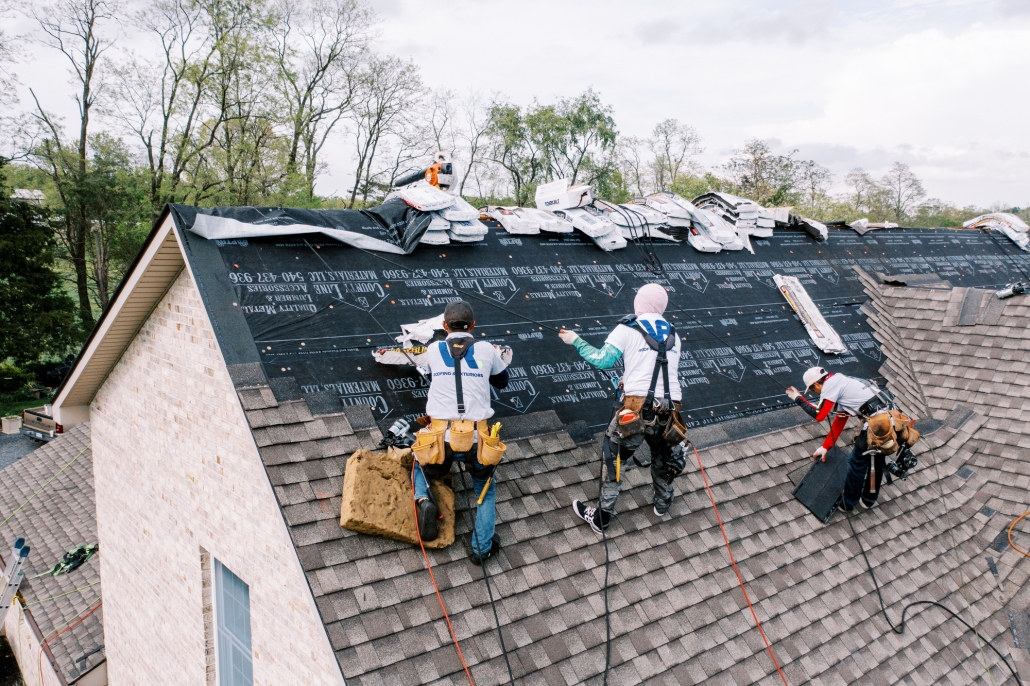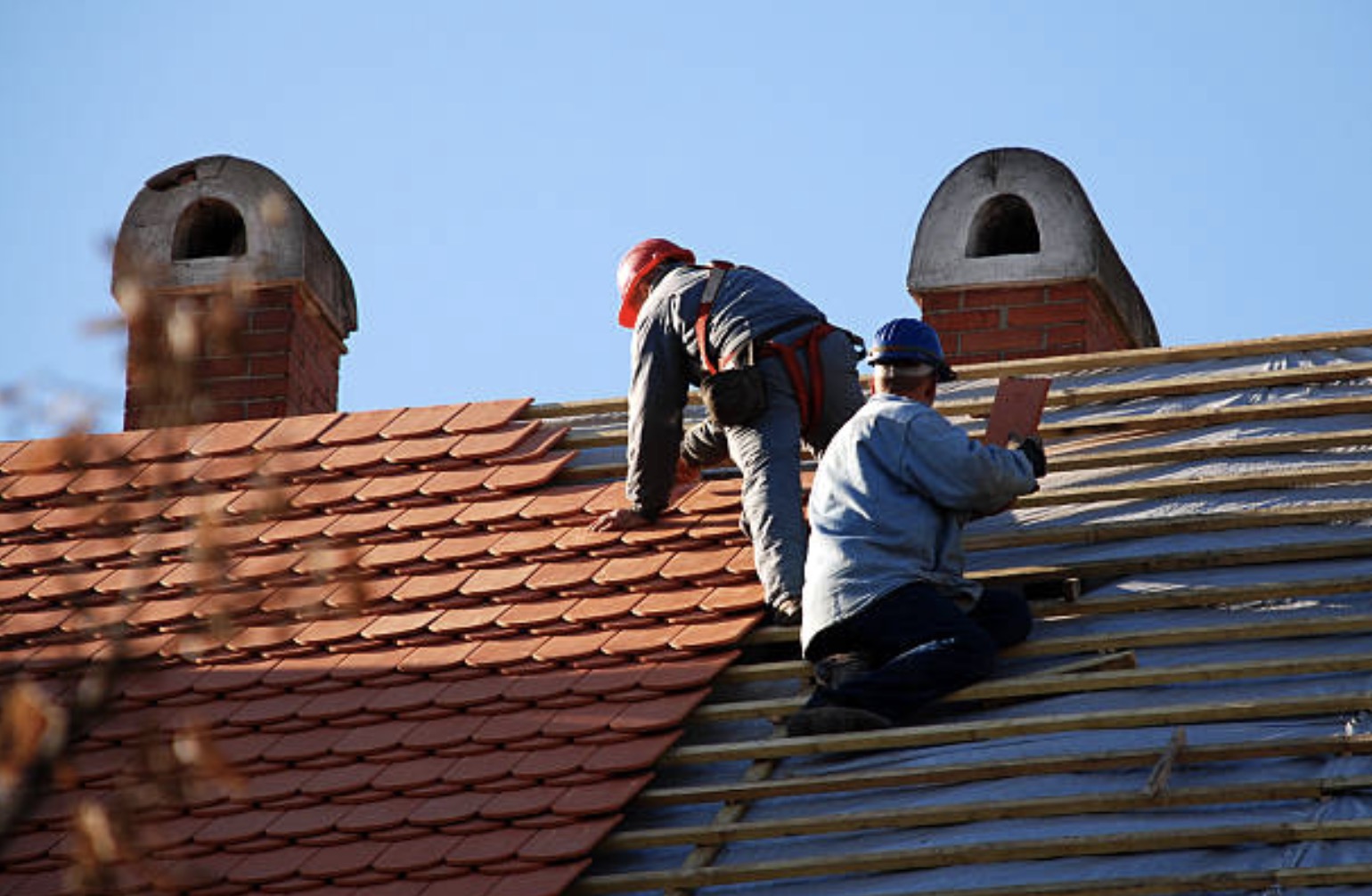Frequently Asked Questions About honolulu roofing materials for Island Homes
Frequently Asked Questions About honolulu roofing materials for Island Homes
Blog Article
Leading Tips for Effective Roofing Repair Service: Maintaining Your Home Protected
Efficient roofing repair work is essential for maintaining a secure and sound home. Home owners typically ignore typical issues that can result in significant issues otherwise addressed without delay. Regular inspections can identify possible hazards beforehand. roofing company honolulu. However, recognizing when to take on repair services yourself and when to call a professional is similarly essential. Exploring these variables can aid protect against pricey mistakes, guaranteeing the longevity of your roofing. What are the crucial elements to mirror upon in this decision?
Understanding Typical Roofing System Issues
When homeowners disregard routine maintenance, they usually come across usual roof covering concerns that can lead to considerable damage. One prevalent issue is tile damage, which can occur because of age, climate conditions, or improper installation. Fractured, curled, or missing roof shingles jeopardize the roofing's stability, permitting water to permeate in. An additional concern is the build-up of moss and algae, which not only influences visual appeals however can additionally catch wetness versus the roofing, increasing decay. Furthermore, blinking failing around chimneys and vents can result in leakages, especially during heavy rains. Clogged up gutters better worsen these problems, triggering water to swimming pool and raising the threat of structural damages. Homeowners need to stay alert to these issues, as resolving them without delay can stop expensive repair services and extend the life-span of the roof covering. Recognizing these typical roofing issues is important for keeping a safe home atmosphere.
Checking Your Roofing: What to Seek
When evaluating a roofing, it is vital to determine signs of damages and use that could cause even more significant problems. Normal upkeep checks can assist house owners capture issues early, ensuring the roofing system continues to be in good problem. By being positive, they can extend the life-span of their roofing system and prevent costly repair services.
Indications of Damages
Although a roofing system might appear intact from the ground, refined indicators of damage can usually go undetected. House owners should be alert in their assessments, seeking missing, split, or curling shingles that indicate wear. Dark areas or streaks might recommend wetness accumulation, while granules in seamless gutters can indicate shingle damage. Furthermore, inspection of blinking around chimneys and vents is vital, as corrosion or gaps can bring about leakages. Inside the home, water stains on ceilings or wall surfaces may expose surprise roofing issues. Mold and mildew development in attics or along eaves can likewise indicate underlying problems. Frequently observing these indications can assist house owners address roofing damage immediately, guaranteeing their home remains secure.
Regular Upkeep Checks
Regular maintenance checks are vital for protecting a roofing's honesty over time. Property owners must carry out visual inspections a minimum of twice a year, ideally in spring and fall. Secret areas to examine include shingles for crinkling, breaking, or missing items, along with the blinking around chimneys and vents for signs of corrosion or deterioration. In addition, rain gutters should be removed of particles to stop water buildup, which can result in leaks. Inspecting for mold and mildew or moss growth can also show moisture problems. Inside the home, ceilings and attic room spaces need to be examined for water spots or indications of leaks. By dealing with these prospective issues early, home owners can expand the life-span of their roof and keep a secure, audio living atmosphere.
Safety First: Safety Measures for Roofing Repair Service
Prior to starting on roofing system repair, people need to prioritize safety and security to alleviate risks related to operating at elevations. Correct preparation is essential; putting on appropriate safety gear, consisting of non-slip footwear, handwear covers, and a headgear, can considerably decrease injury threats. In addition, making use of a durable ladder and making certain it is put on secure ground is necessary for safe access to the roof.It is a good idea to evaluate the roofing system for prospective risks, such as loosened tiles or unsteady locations, prior to starting work. Utilizing safety belt and drop protection systems can supply added security, especially on steep roof coverings. Furthermore, it is very important to have a clear plan in position, consisting of having a person on the ground to aid in case of emergencies. Finally, functioning in ideal weather conditions, staying clear of strong winds or rain, will furthermore boost safety. By taking these safety measures, people can aid ensure a much safer roofing system fixing experience.
DIY vs. Expert Repairs: Making the Right Choice

Essential Devices and Materials for Roofing System Fixing
Choosing the right devices and products is an essential step for homeowners carrying out roofing system repair work, whether they go with a DIY method or hire experts. Vital devices consist of a tough ladder for risk-free access, roof covering nails, a hammer, and an utility blade to cut materials properly. A crowbar can help in eliminating damaged shingles, while a caulking weapon is critical for sealing leaks.In terms of materials, asphalt shingles are commonly used because of their sturdiness and cost-effectiveness. House owners need to also take into consideration underlayment, which provides an added layer of security against moisture. Flashing materials are required for areas around smokeshafts and vents to prevent leakages. Security equipment, consisting of gloves and goggles, is equally essential to guarantee security throughout repair work. By furnishing themselves with the right tools and materials, homeowners can boost the effectiveness and safety of their roof repair work undertakings.
Preventive Upkeep: Extending Your Roof's Lifespan
To ensure a roof covering remains in excellent problem and maximizes its life-span, home owners need to prioritize precautionary maintenance. Normal evaluations are important; they permit the early detection of problems such as leakages, damaged tiles, or clogged up seamless gutters. It is a good idea to perform these inspections at the very least twice a year, particularly after severe weather events.Cleaning the roof covering is another crucial aspect of upkeep. Removing debris like fallen leaves, branches, and moss helps protect against water accumulation and advertises correct drain. Home owners need to additionally check and preserve flashing around chimneys and vents to prevent water intrusion.Additionally, ensuring correct air flow and insulation in the attic room can prevent dampness accumulation, which can bring about mold and structural problems. By investing effort and time into precautionary maintenance, house owners can substantially prolong their roof covering's life expectancy, conserving money on expensive fixings or substitutes in the future.
Knowing When to Change Your Roofing
Exactly how can a house owner figure out the correct time to change their roof? A number of indications can indicate the need for replacement. To begin with, age is a vital variable; most roof coverings last in between 20 to 30 years, relying on product. Home owners should likewise inspect for visible indicators of damage, such as missing tiles, curling sides, or extensive granule loss. Water spots on ceilings or wall surfaces might suggest leakages, recommending underlying roofing system concerns. Additionally, a sagging roofline can direct to architectural problems, demanding immediate attention.Another factor to consider is power effectiveness; raised heating or cooling prices may mirror poor insulation or ventilation because of roofing damage. If repair work come to be constant and expensive, it might be extra cost-effective to spend in a brand-new roofing system. By assessing these variables, property owners can make informed choices about roof replacement, ensuring the integrity and security of their home.
Frequently Asked Questions
Exactly how Usually Should I Inspect My Roof for Damages?
The frequency of roofing system evaluations ought to ideally be biannually, specifically after extreme weather occasions. Normal checks assist recognize damages early, preventing costly fixings and making certain the longevity of the roof's architectural stability and function.

Can I Repair My Roofing in Bad Weather?
Repairing a roofing in negative weather condition is generally unadvisable (honolulu roofing materials). Rain, snow, or high winds can produce harmful problems, raising the risk of crashes and compromising the high quality of the repair, inevitably bring about further damages
What Are the Indicators I Need a Full Roof Covering Substitute?
Indicators showing a full roofing substitute consist of extensive tile damages, leaks, drooping, visible mold and mildew, and age surpassing 20 years. Home owners should examine these problems to identify if fixing initiatives want for longer-term security.
How Long Does a Normal Roof Repair Work Take?
Generally, a roof repair work can take anywhere from a few hours to numerous days, relying on the extent of the damages. Variables such as climate condition and the kind of materials made use of likewise influence the period.

Will My Home owner's Insurance Cover Roofing system Services?
Figuring out whether homeowner's insurance policy covers roof repair work relies on the plan specifics. Generally, coverage consists of damage from unanticipated occasions, but exclusions might use. Insurance holders ought to examine get more info their terms or consult their insurance coverage agent for clearness.
Report this page